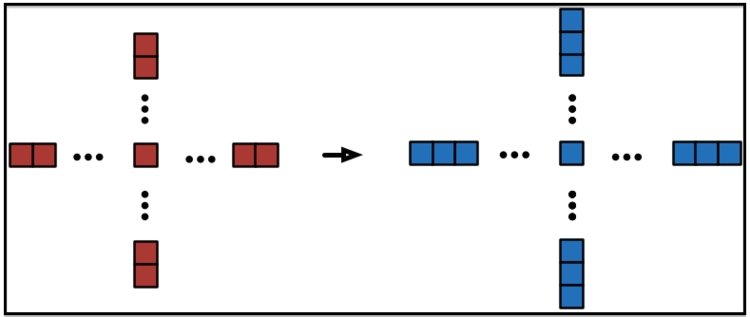Perimeter Of Cross - Extrapolating
 As we go from one figure to the next, how much does the perimeter increase by?
As we go from one figure to the next, how much does the perimeter increase by?
This section requires Javascript.
You are seeing this because something didn't load right. We suggest you, (a) try
refreshing the page, (b) enabling javascript if it is disabled on your browser and,
finally, (c)
loading the
non-javascript version of this page
. We're sorry about the hassle.
6 solutions
This is not type right solution it is 12. Since each square will add three sides with four squares it is 12.
Log in to reply
Each square will add three squares, but it also removes one side of the square it's attached with. Look at the top leg; the square above gets three sides but the square just below that loses the top side.
Can you explain to me what the solution is and how you get it???? I'm seeing 12 and 8, but I'm not understanding what is right.
3*4=12
GOOD QUESTION
Why it is 3-1 And not 4-1
Log in to reply
Because the added square already has one side missing. Look at the top leg; the new square's bottom side is not counted.
Its quite simple 4,12,20,28,36 .... simple addition of 8 in every solution
Can't understand explain in detail. According to me it's 12
It is 12 3 x 4 squares. Is 12
As we move from one fig to another, we can find that they follow a sequence of odd multiples of 4 respectively.
simply add 8 with previous one thats it
It is simple.One side of each square is equal to 1 unit.In the last figure one square is added to each side .So the increase in perimeter =2*4=8.
8,as 2*4
After adding one square - one unit of the perimeter is lost and three units are added . In another words, for 1 square added we get ( − 1 + 3 ) = 2 increase in perimeter. Each time we add 4 squares therefore we get ( − 1 + 3 ) × 4 = 8 increase in perimeter.